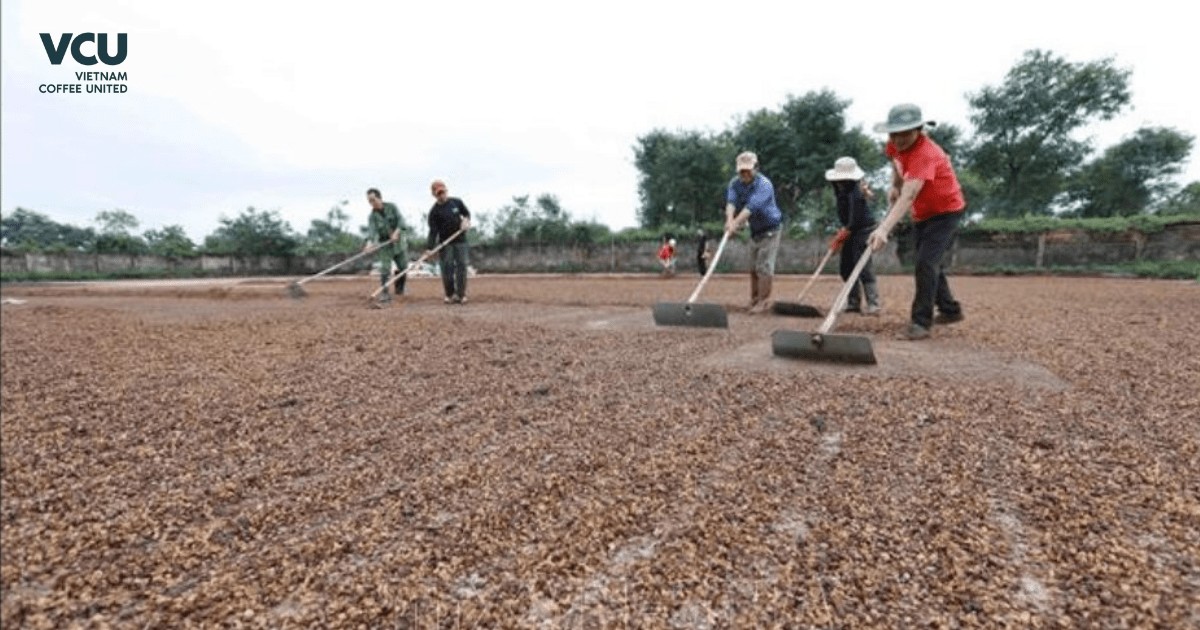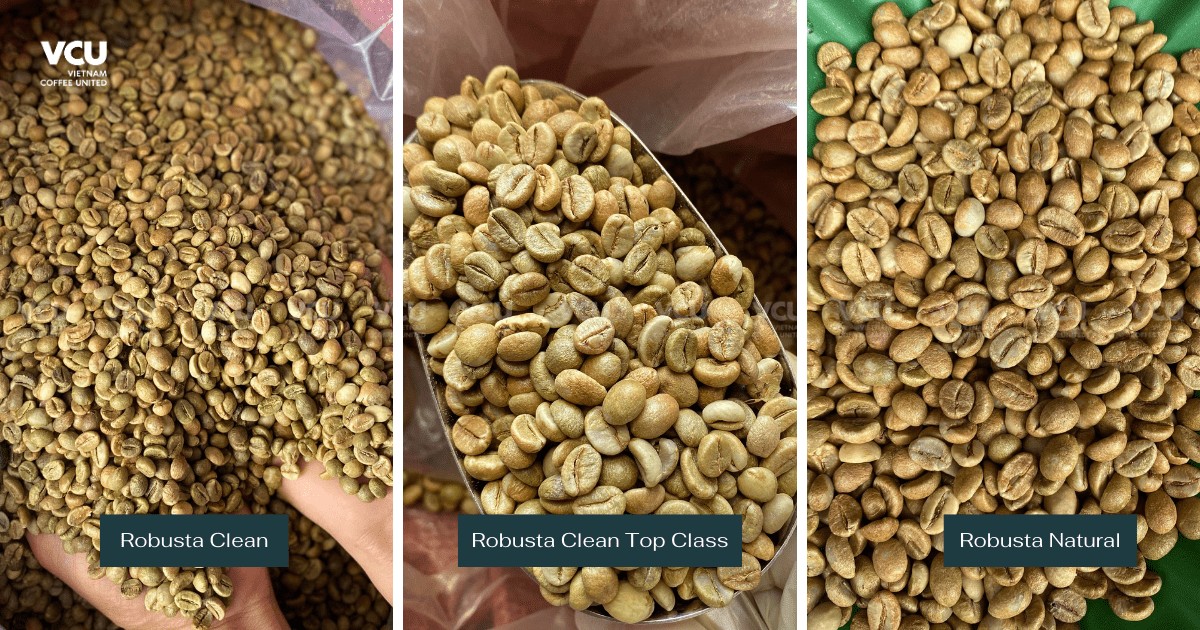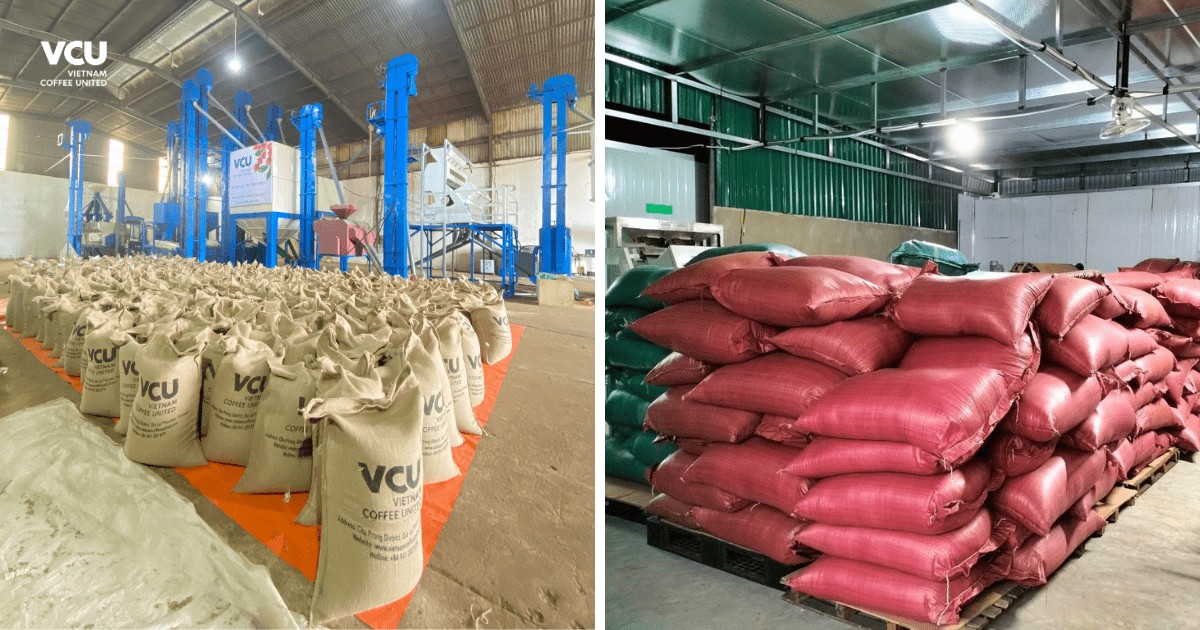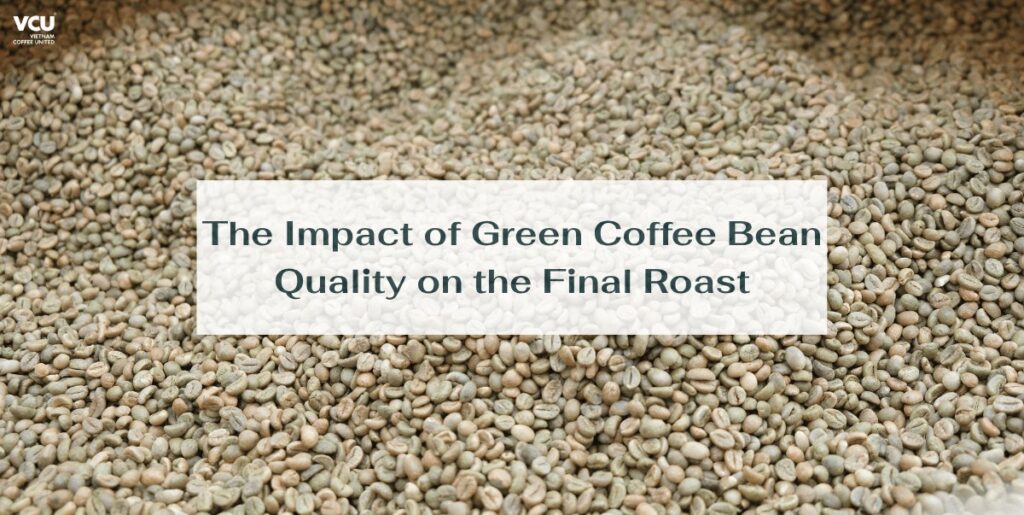Basic Information about the Dry Processing Method
The coffee processing method is one of the important steps in creating the unique flavor of coffee. Each processing method results in a different flavor profile. In this article, VCU provides basic information about the dry processing method in the coffee production process!
What is Dry Processing?
Dry processing, also known as Natural processing or Unwashed processing, is the simplest and oldest method in the history of coffee. This method uses less water and energy, making it popular in countries with limited water resources, hot climates, or for products in the low and medium price segments.

Which Coffee Varieties Use Dry Processing?
The dry processing method is suitable for thin-skinned coffee varieties like Robusta. Since Robusta coffee has a relatively high acidity, using the wet processing method could leave a harsh sour taste, which would be unpleasant.
Dry-processed Robusta coffee has a rich, bitter taste with a hint of wood and earth in its aroma.
How is Dry Processing Done?
Dry processing method uses the heat of the sun to reduce the coffee’s moisture content to 11-12%. This process can take 20-30 days if the weather is favorable. Coffee can be dried on racks, raised beds, or on the ground.
Once the outer layer of the coffee dries and turns black, the dry processing is considered complete, and it moves on to the hulling stage.
The key to dry processing or any other method is the harvest, ensuring the cherries are at their optimal ripeness. After that, the coffee must be sorted based on ripeness. Mixing unripe and ripe cherries can negatively affect the coffee’s flavor.

Currently, there are some Robusta coffee products on the market that undergo dry processing, catering to various market segments, including:
- 75-80% ripeness: Robusta Clean
- 80-85% ripeness: Robusta Clean top class
- >96% ripeness: Robusta Natural
Characteristics of Dry-Processed Coffee
Fermentation occurs at every stage of the processing, starting when the coffee is harvested. During fermentation, sugars and acids inside the coffee cherries are transformed. Although the coffee is not kept in fermentation tanks or controlled like wet processing, the fermentation process in dry processing can be influenced by environmental temperature and drying time.
The coffee must be regularly turned several times a day during drying to ensure even drying and prevent mold growth. At night, the coffee should be piled up and covered to protect it from dew. Uneven drying can lead to unpleasant flavors in the coffee due to the enzymes in the fermented cherries.

Ending the Drying Process
The drying process is completed when the outer skin of the coffee becomes shriveled, hard, and almost black. This is the point when the coffee moves on to the hulling stage. The timing of this step is crucial for the dry processing method. If the coffee is not dry enough, it may develop mold due to bacteria. If it is too dry, it will become brittle, causing breakage during grinding.
Advantages of Dry Processing
- Environmentally friendly.
- Cost-effective, requiring fewer tools and less water.
- Preserves the natural flavor of the coffee cherry.
Disadvantages
- Sensitive to weather conditions; rain can lead to mold, and uneven drying can occur.
- Frequent monitoring is necessary to ensure the coffee is properly dried; otherwise, it can create a favorable environment for mold and bacteria.
VCU – A Reliable Coffee Supplier in Vietnam
Established in 2022, VCU owns a green bean processing plant with a capacity of over 70 tons/day, along with a coffee roasting plant with a capacity of 80 tons/month.
Proudly located in Gia Lai province – one of the largest coffee-growing areas in Vietnam, VCU always has an abundant and high-quality supply at competitive prices from the factory. More importantly, we have the strong resources to produce Robusta and Arabica coffee across segments from commercial to premium, meeting export standards.

Above are some basic details about the dry processing method, and we hope this information is helpful.
Currently, VCU has a range of Robusta coffee products processed using the dry method. If you need advice or a quote, feel free to contact VCU!
Contact Information
VCU Joint Stock Company (VCU JSC)
Address:
– Roasting Facility: Residential Group 6, Chu Prong Town, Chu Prong District, Gia Lai Province
– Green Bean Facility: Ia Der Commune, Ia Grai District, Gia Lai Province
– Hotline: +84 941 203 879
– Fanpage: VCU – Vietnam Coffee United
– Email: info@vietnamcoffeeunited.com







